Tak Bat, or monks almsgiving, occurs just before sunrise across the width and breadth of Laos. But the practice in, Luang Prabang—the country’s spiritual epicenter—is particularly significant, and is largely responsible for putting Luang Prabang on the tourist map.
In the past decade, fears have mounted over whether the popularity of this ritual of humility and meditation in this UNESCO heritage city may ultimately lead to the end of Tak Bat in Luang Prabang.
Fortunately, many locals are fighting back to keep tourists in line and the monks participating in the daily ritual healthy and respected.
Over the past decade, we’ve witnessed how attitudes, behaviors, and norms have changed with regards to Tak Bat—in terms of tourists and observers, but also local residents hoping to cash in on the growing number of visitors.
If you plan to visit Luang Prabang and experience Tak Bat for yourself, here is what you need to know about this time honored (and endangered) cultural and spiritual daily ritual.
Tak Bat (Sai Bat) Essentials
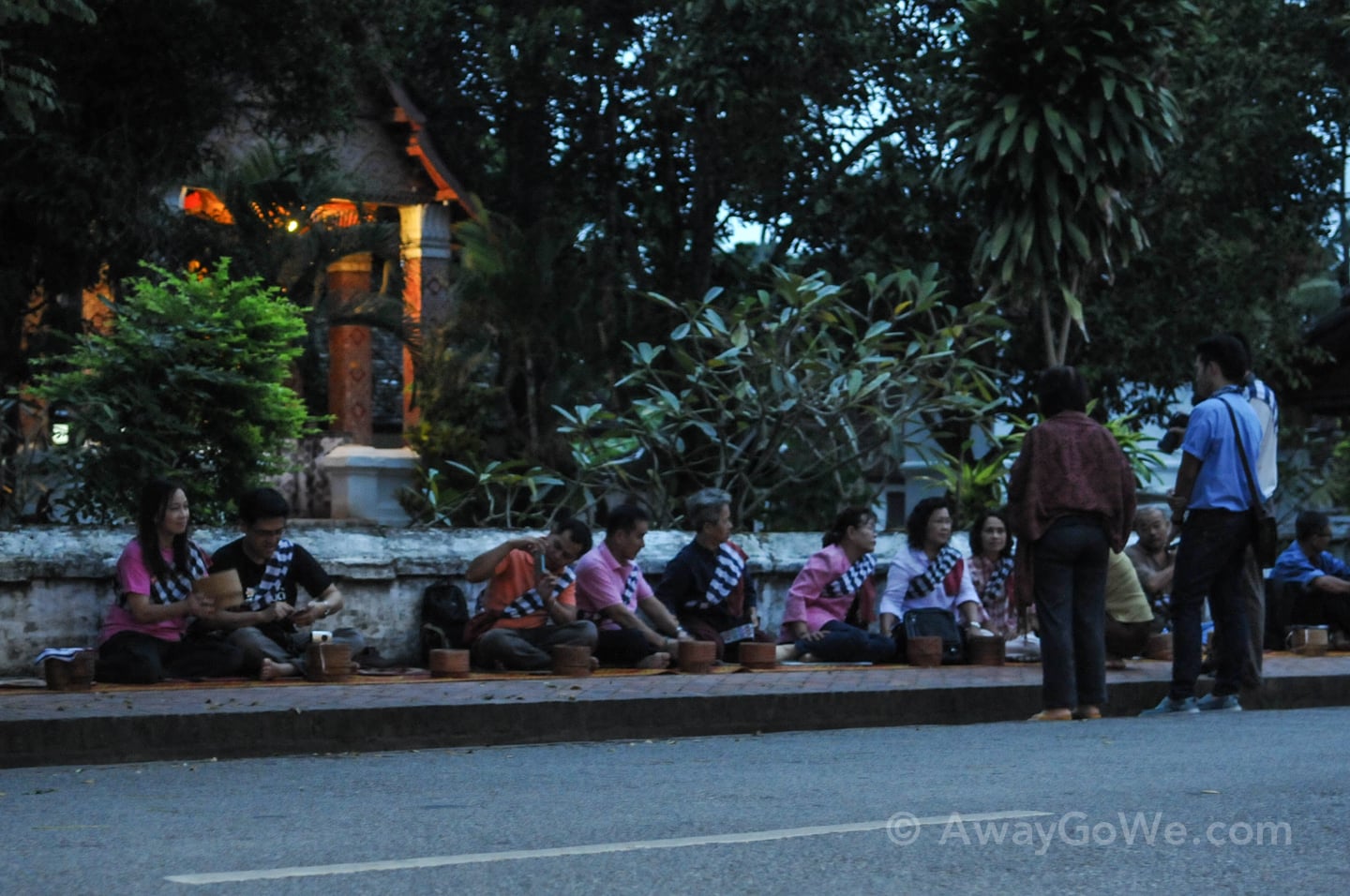
Morning almsgiving in Luang Prabang is technically known as sai bat, but more commonly referred to as the more general tak bat (almsgiving) in wider travel circles, so that’s the term used throughout this guide.
Before dawn, devout local Buddhists kneel along Sakkaline Road with carefully-prepared sticky rice, waiting for the novice monks to arrive.
The mood is solemn and meditative as the participants sit in silence.
Then, a faint orange glow appears in the distance, as one-by-one the monks approach.
| What time is Tak Bat? | Every morning just before sunrise. Plan to arrive between 05:30-06:00. |
| Where is Tak Bat? | The best place to observe Tak Bat is along Sakkaline Road between Wat Sene and Wat Sibounheuang. |
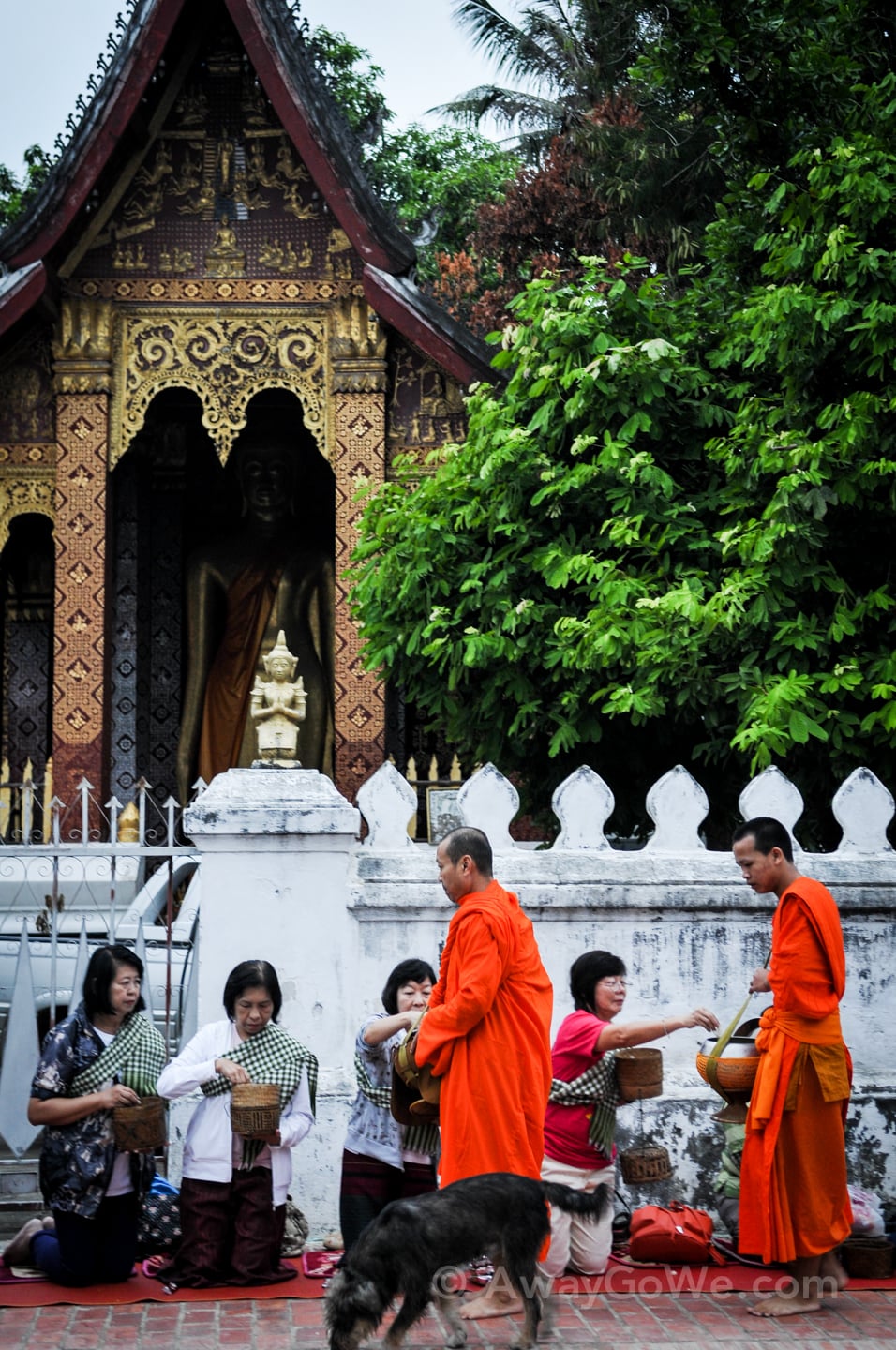
Most lay participants are here to practice their faith and gain merit for the afterlife.
They wear sashes over their left shoulders, ensure that their head is lower than the monks’ and bow as each monk passes, careful to avoid eye contact — all signs of the utmost respect for the barefoot, saffron-clad individuals in their daily demonstration of faith and humility.
The monks lining the street are novice monks, generally young men and boys who have not yet committed fully to being a Buddhist monk.
The majority of males in Laos spend time as novice monks at some point in their lives.
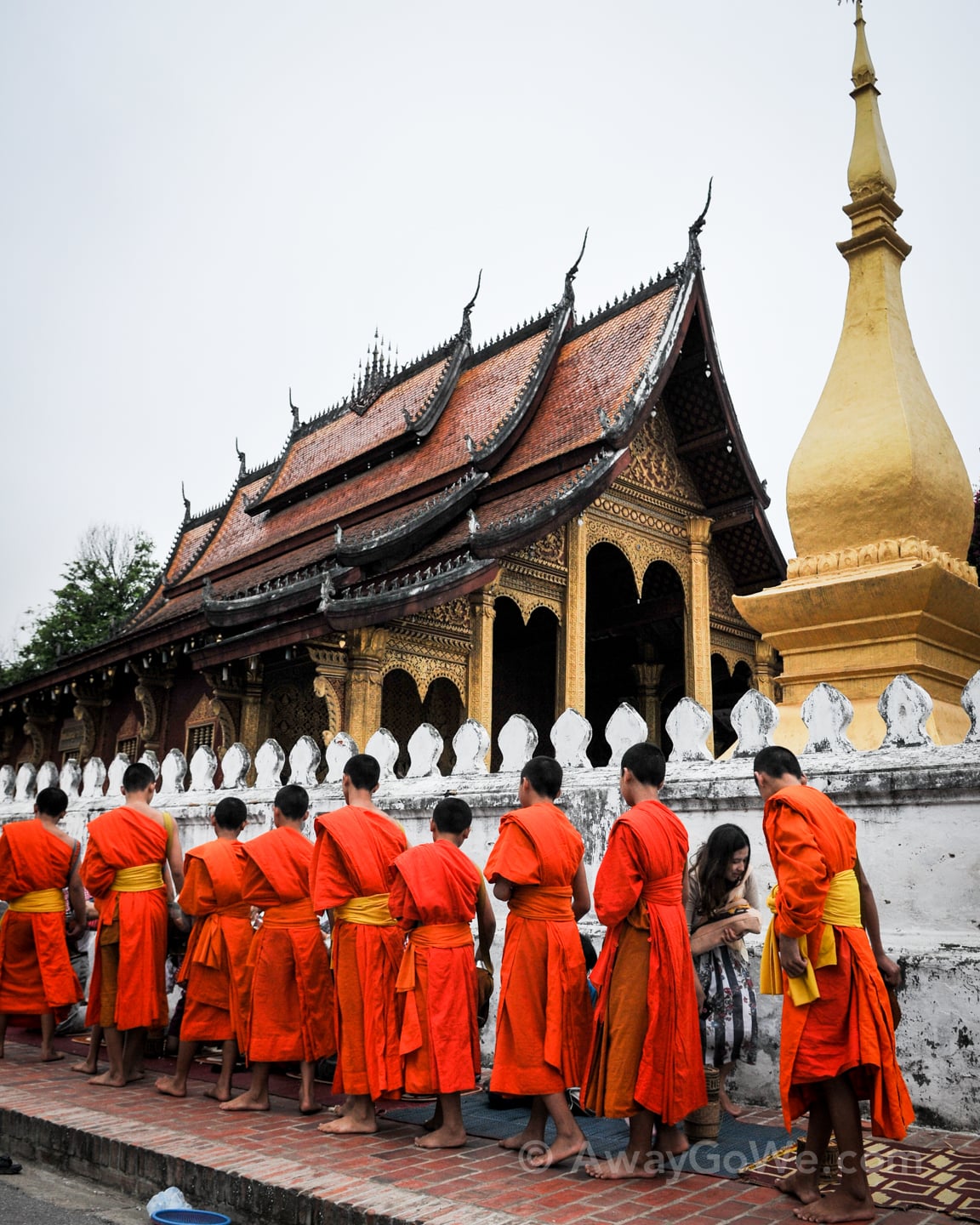
As the sun rises, the endless procession of monks continues.
There are just short of a dozen wats (Buddhist temples) in Old Luang Prabang, and hundreds of novice monks taking part in Tak Bat as a result.
The kao kai noi sticky rice offered by the devout will constitute the bulk of these young mens’ sustenance for this particular day. Therefore, it is essential that the rice be fresh and have a high quality.
Recent Controversies
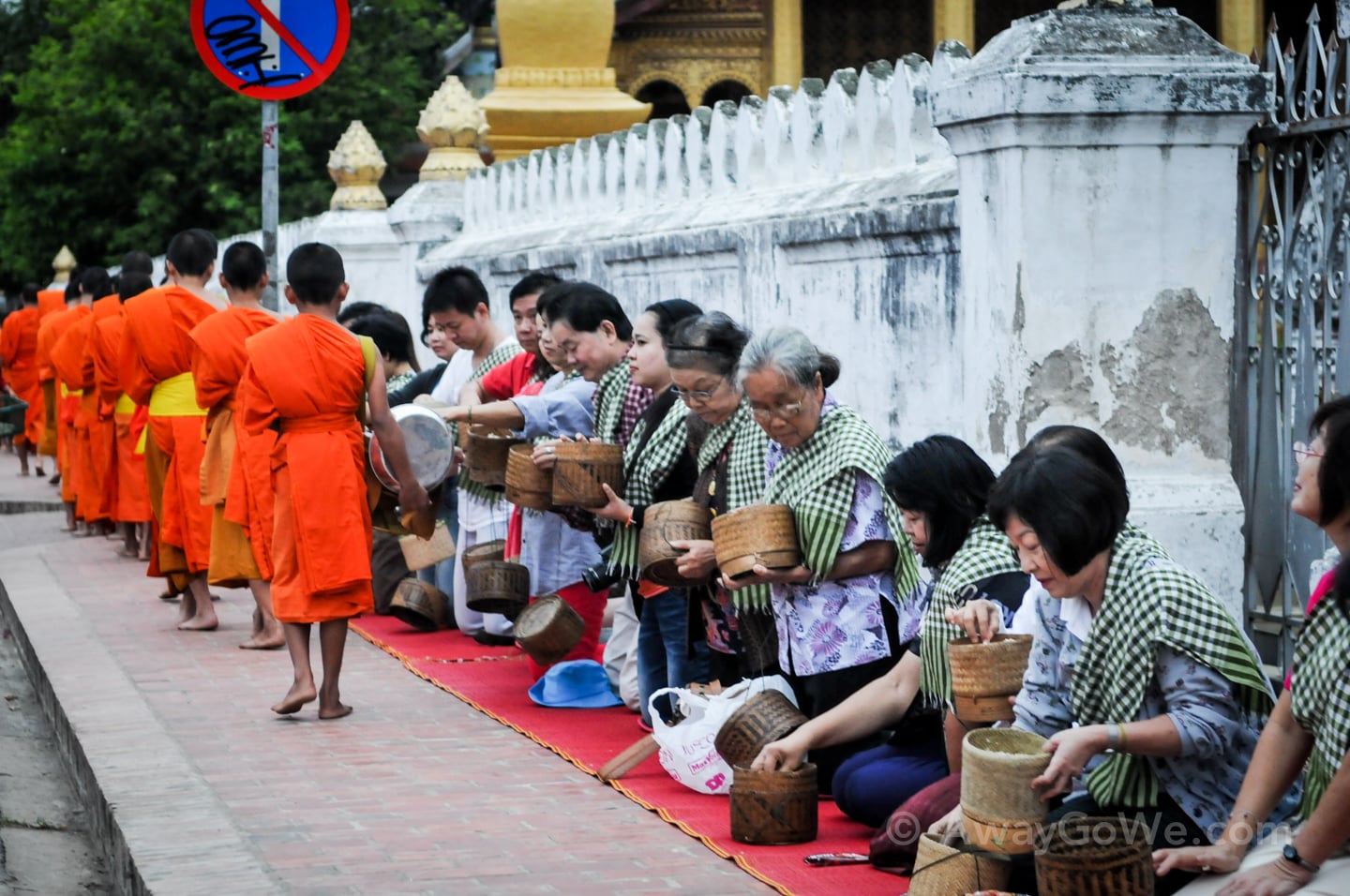
In recent years, tourist participant numbers have dramatically increased.
A small minority are practicing Buddhists here to demonstrate their faith and respect for the monks’ sacrifice.
But an increasing number of foreign visitors view Tak Bat as a mere cultural show to participate in or tick off a bucket list.
Often, these individuals fail to properly educate themselves on the rules and customs of Tak Bat, which can manifest in anything from a simple faux pax to major transgression.
Furthermore, enterprising locals have begun to capitalize on the growing number of tourist participants, selling them leftover or low-grade rice, and monks have even become very sick from such rice.
Another problem in recent years has been the brazen and disrespectful attitude of many tourists in taking photos of the procession and monks themselves.
Early in the morning, it can still be possible to view the ritual without the hordes of tourists, but by sun-up, lines of minivans and tuk tuks will often ferry in dozens of tourists, eager to get an up-close-and-personal snapshot of the monks.
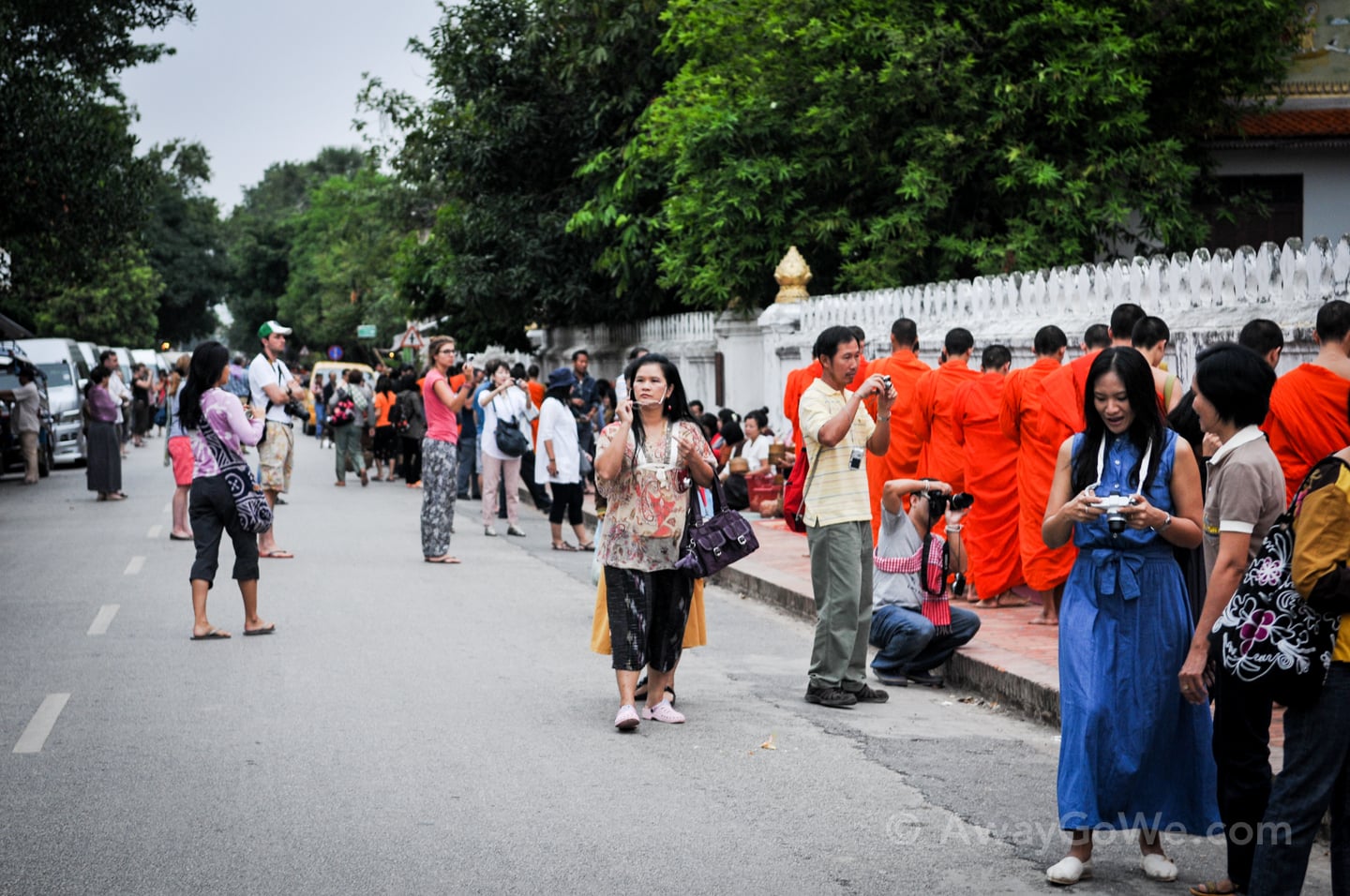
One can’t help but be taken by the beautiful, exotic, and hugely photogenic scene playing out before you.
But we have been appalled by what many observers did to get their shot, disrupting and disrespecting the monks and the religious tradition in the process.
How to Experience Tak Bat Respectfully
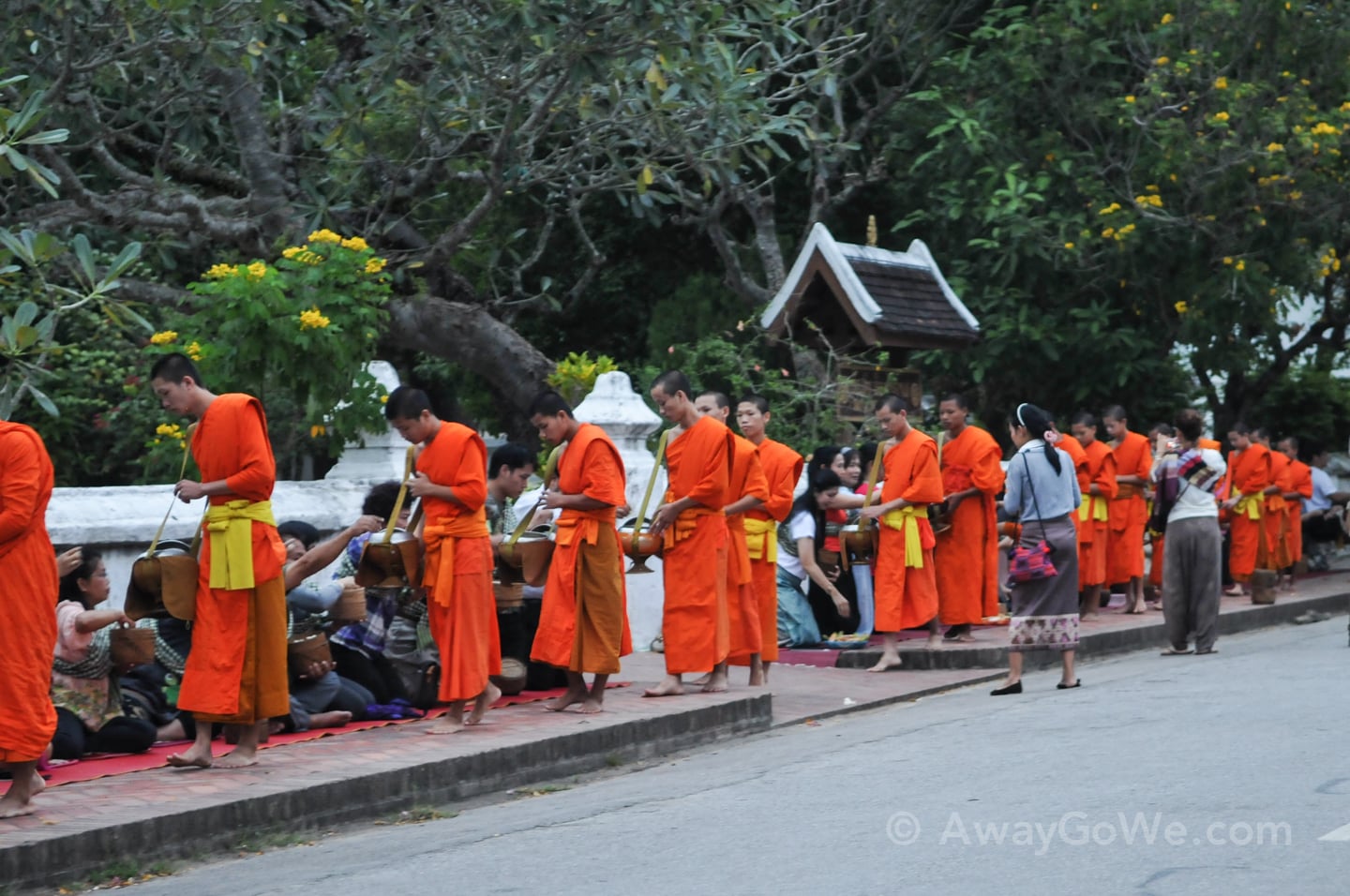
When we observe Tak Bat, we try our best to adhere to the rules and tips posted around town regarding being respectful of what is taking place here every morning.
If most observers approached it as the religious devotional exercise that it is, perhaps more tourists would act differently.
Instead, sadly, it seems that so many approach Tak Bat as a cultural show put on for them, which it is not.
Some of the guidelines we did our best to adhere to were dressing modestly, standing a good distance (several meters) from the procession, and taking photos from a distance with a long lens (zoom lens) and without a flash.
Generally, the more discreet, unobtrusive, and respectful you can be, the better.
We found it most satisfying to stow the camera completely after ten minutes and simply observe the procession from across the street, despite the many onlookers who opted differently.
In short, you can’t seem to go wrong with observing quietly and respectfully from a good distance.
Final Thoughts
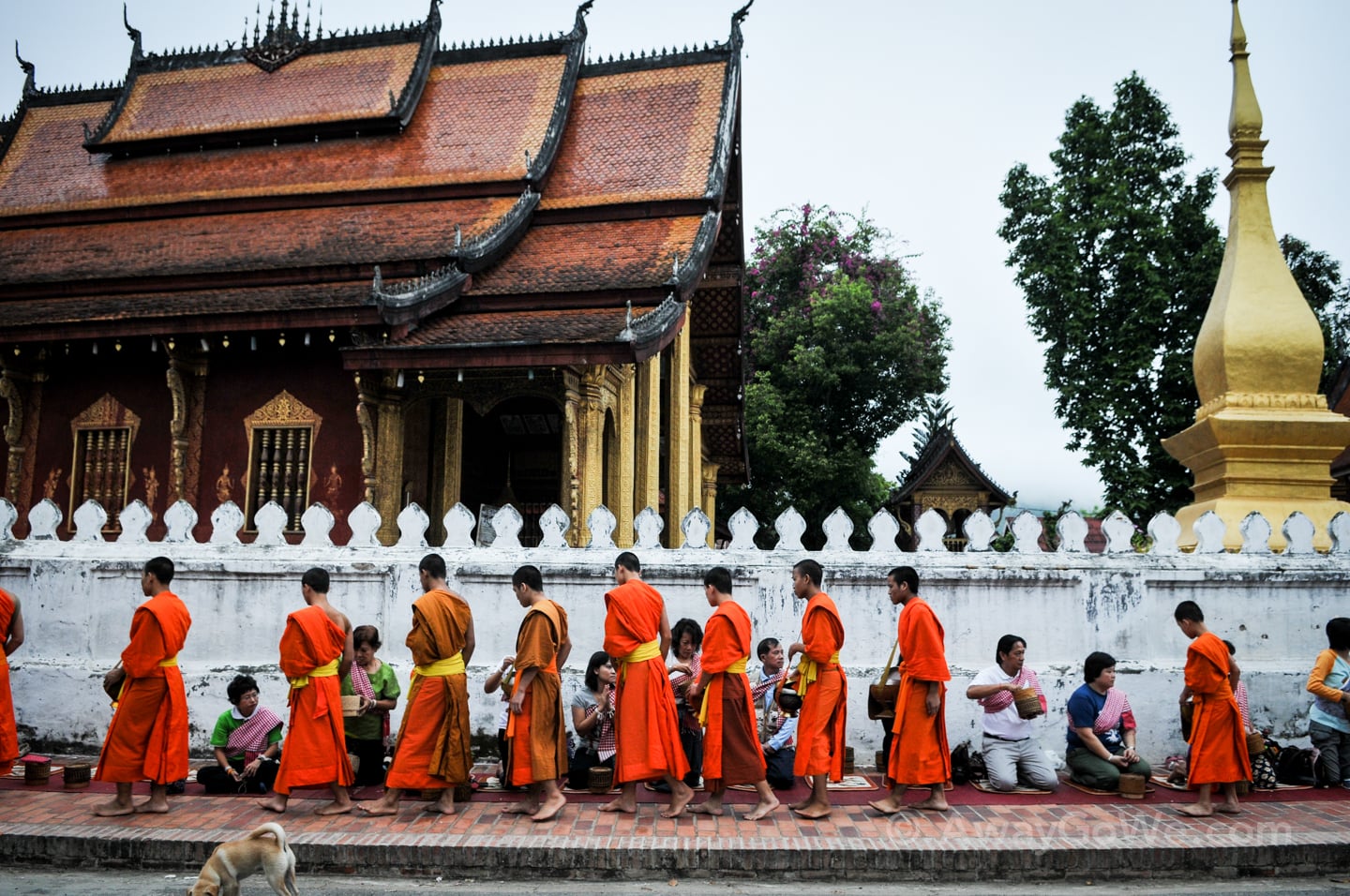
We feel incredibly grateful for the opportunity to have been able to observe this beautiful and meaningful demonstration of humility and faith several times over the years, and are indebted to these novice monks and their community for allowing us to be present.
My sincere hope is that others will approach Tak Bat in Luang Prabang in a similar vein, so that generations to come can continue to witness and respectfully take part in this ages-old practice of faith and humility.
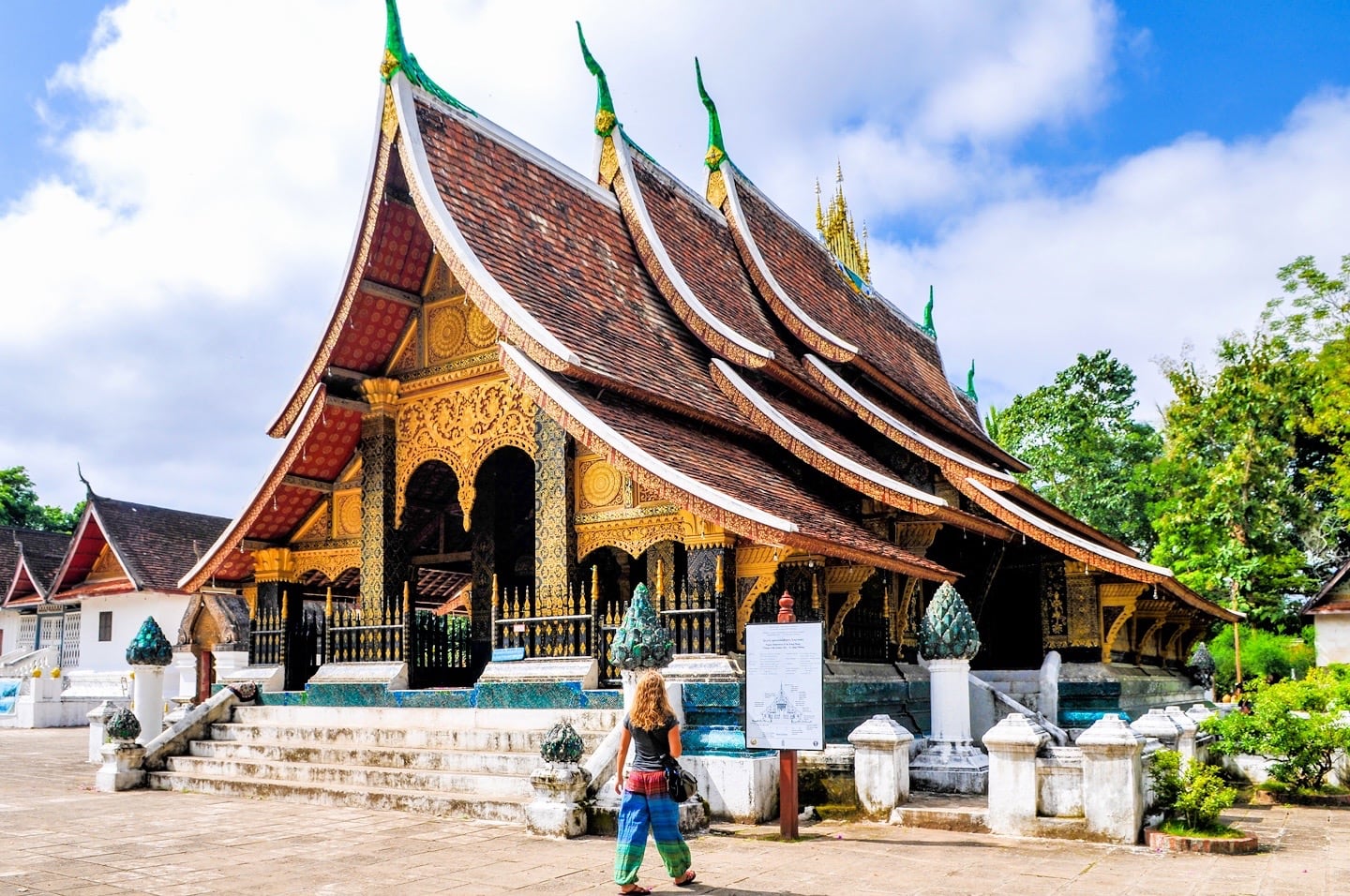
More Reading for Your Laos Trip
Luang Prabang
Around Laos
- 36 Reasons to Visit Laos Now
- Thakhek Loop by Motorbike: The Ultimate Guide
- An Insider’s Guide to Kong Lor Cave in Laos
- Backpacking Nong Khiaw
Vientiane
Thank you for the tips. I will take note of these and will surely observe this serene practice of faith when I arrive in Luang Prabang by Saturday 5/6/23